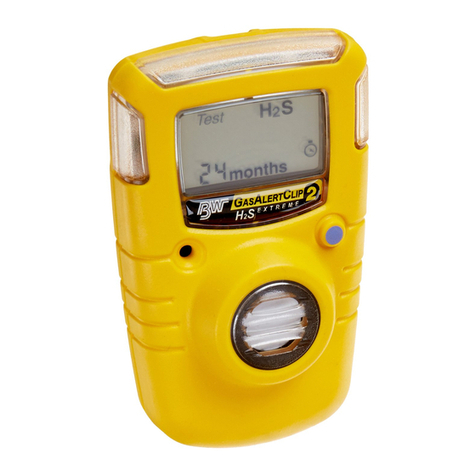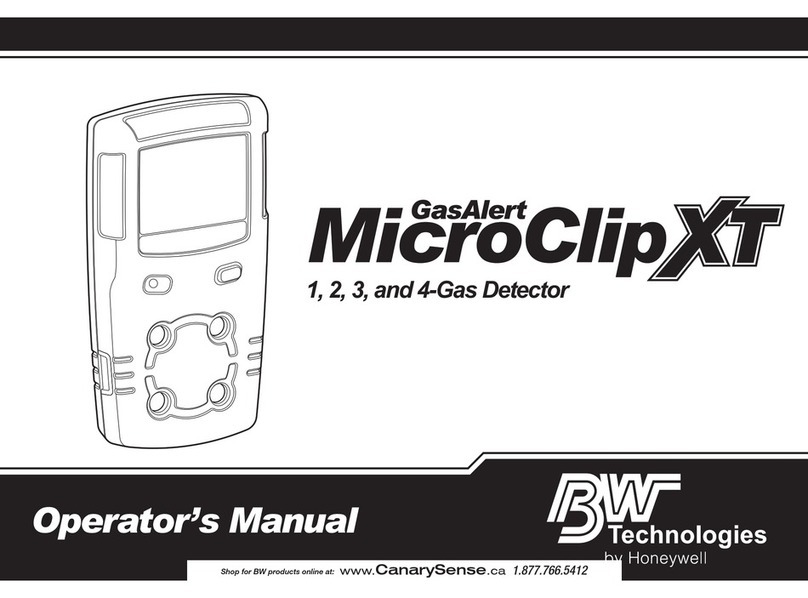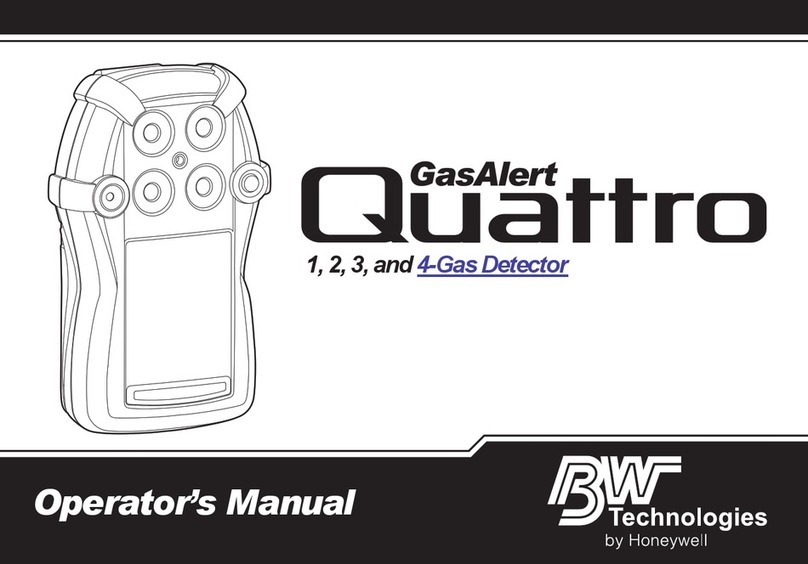GasAlertMicro 5/PID/IR
Quick Reference Guide
2
aCautions
•Warning: Substitution of components may impair Intrinsic
Safety.
• Caution: For safety reasons, this equipment must be
operated and serviced by qualified personnel only. Read and
understand the user manual completely before operating or
servicing.
• Charge the detector before first-time use. BW recommends
the detector be charged after every workday.
• Charge the battery pack immediately when a low battery
alarm occurs.
• Read and adhere to the battery cautions provided in
Replacing Battery Cells and Packs on page 17.
• BW recommends that the combustible sensor be checked
with a known concentration of calibration gas after any
exposure to contaminants/poisons such as sulfur
compounds, silicon vapors, halogenated compounds, etc.
• BW recommends to bump test the sensors before each
day’s use to confirm their ability to respond to gas by
exposing the detector to a gas concentration that exceeds
the alarm setpoints. Manually verify that the audible and
visual alarms are activated. Calibrate if the readings are not
within the specified limits.
• Calibrate the detector before first-time use and then on a
regular schedule, depending on use and sensor exposure to
poisons and contaminants. The sensors must be calibrated
regularly and at least once every 180 days (6 months).
• Calibrate only in a safe area that is free of hazardous gas in
an atmosphere of 20.9% oxygen.
• Only the combustible gas detection portion of this
instrument has been assessed for performance by CSA
International.
• The combustible sensor is factory calibrated to 50% LEL
methane. If monitoring a different combustible gas in the
% LEL range, calibrate the sensor using the appropriate
gas.
• Caution: High off-scale LEL readings may indicate an
explosive concentration.
• Protect the combustible sensor from exposure to lead
compounds, silicones, and chlorinated hydrocarbons.
Although certain organic vapors (such as leaded gasoline
and halogenated hydrocarbons) may temporarily inhibit
sensor performance, in most cases, the sensor will recover
after calibration.
• For use only in potentially explosive atmospheres where
oxygen concentrations do not exceed 20.9% (v/v).
• Any rapid up scaling reading followed by a declining or
erratic reading may indicate a gas concentration beyond
upper scale limit, which can be hazardous.
• Extended exposure of the GasAlertMicro 5, GasAlertMicro 5
PID, or GasAlertMicro 5 IR to certain concentrations of
combustible gases and air may stress the detector element
that can seriously affect its performance. If an alarm occurs
due to a high concentration of combustible gases,
recalibration should be performed, or if needed, the sensor
replaced.
• The BW pump module (M5-PUMP) is certified for use with
the GasAlertMicro 5, GasAlertMicro 5 PID, and
GasAlertMicro 5 IR models only.
































